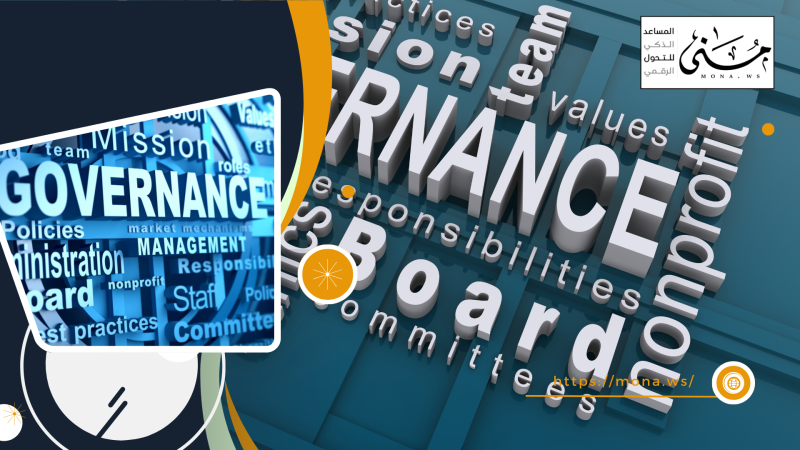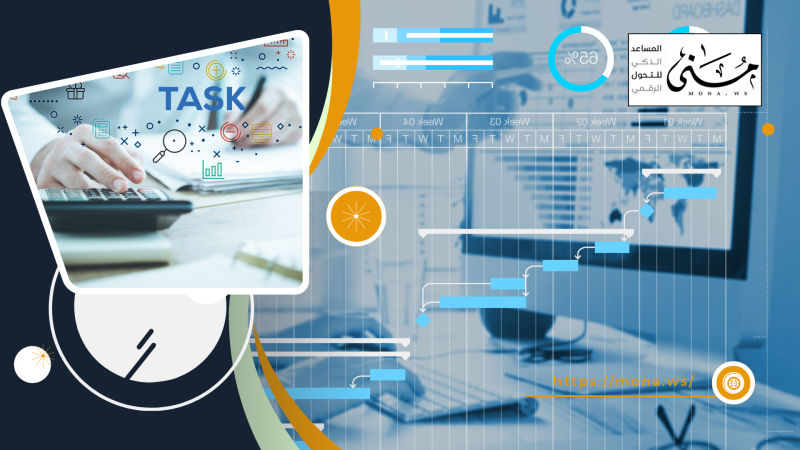In the Contemporary Digital Economy, Information Is the New Oil
In today's digital economy, information is a core strategic asset—often referred to as the "new oil." An organization’s ability to manage this asset effectively defines its trajectory toward leadership or obsolescence. Well-managed data supports sound decision-making and enhances operational efficiency. However, every organization faces a critical dilemma: Should it adopt a strict centralized approach to ensure control and consistency, or follow a decentralized path to encourage flexibility and innovation?
Information Chaos: Diagnosing the Symptoms of Absent Centralized Management
When an organization lacks a clear information management strategy, it doesn't consciously choose decentralization—it slides into it by default. This unintentional information chaos, resulting from uncontrolled growth, creates a fragmented environment where data is scattered across departments and systems. This is not a mere technical annoyance—it is an organizational disorder with clear symptoms that negatively affect every aspect of operations, from daily efficiency to market competitiveness.
Erosion of Operational Efficiency
The immediate impact appears in wasted resources—namely, time and money. Employees spend excessive time searching for documents and information scattered across local drives and emails, leading to project delays and reduced productivity. This often results in duplicated efforts, where staff recreate documents that already exist, causing confusion and unnecessary storage costs.
Crisis of Trust in Data
Information fragmentation leads to the creation of isolated data silos within departments, making it impossible to gain a unified view of organizational performance. This inevitably results in multiple, conflicting versions of the truth—customer or product data may vary between systems. Without a “single source of truth,” teams waste valuable time debating which figures are accurate instead of making productive decisions.
Decision-Making Paralysis
Accurate, timely data is the lifeblood of effective decision-making. In a chaotic information landscape, leaders are forced to make strategic decisions based on outdated or incomplete information—often with severe consequences. The manual process of gathering data from various sources slows down decision-making, stripping the organization of agility and responsiveness to market changes.
Escalating Security and Compliance Risks
Information chaos creates a risky environment. Each isolated system is a potential entry point for attackers, expanding the attack surface and complicating defense strategies. It becomes impossible to enforce uniform security policies, leaving sensitive data exposed. Moreover, compliance with regulations such as GDPR becomes a logistical nightmare, exposing the company to hefty fines and reputational damage.
Enterprise Content Management (ECM) Systems as a Strategic Solution
To overcome the chaos of unstructured decentralization, organizations need a strategic solution—not just to restore order but to extract true value from their informational assets. Enterprise Content Management (ECM) systems offer such a solution, providing an integrated platform to manage the entire content lifecycle securely, efficiently, and in an organized manner, directly addressing the downsides of information chaos.
Unified Central Repository
At its core, an ECM system provides a secure, centralized repository for all organizational content. This eliminates data silos and fragmentation and ensures the existence of a "single source of truth" for all departments, enabling a unified and comprehensive operational view.
Workflow and Process Automation
Advanced ECM platforms include workflow engines that automate repetitive, document-dependent tasks such as invoice or contract approvals. This removes bottlenecks, boosts efficiency, and offers full visibility into process status, freeing employees to focus on higher-value tasks.
Information Lifecycle Management (ILM)
ECM systems are essential tools for implementing ILM strategies, recognizing that information value evolves over time. The system effectively manages this cycle—from content creation and classification to use and distribution, long-term archiving, and ultimately secure disposal once legal retention periods expire.
Enhanced Security and Collaboration
ECM solutions offer multiple layers of security, including granular access controls that ensure users only see what they are authorized to view and full audit trails for all document activities. Simultaneously, they break down departmental silos, fostering smooth collaboration and knowledge sharing, with version control ensuring everyone works on the most recent file.
The Roadmap to Transformation: From Theory to Successful Implementation
Transitioning from information chaos to an organized ECM system is a transformative journey requiring careful planning and the overcoming of key challenges. Yet, as real success stories show, the return on investment can be substantial—reshaping an organization’s efficiency and competitiveness. Understanding and preparing for these challenges is the first step toward successful execution.
Key Implementation Challenges:
Organizations face three main obstacles. First, financial investment—not just in software purchase but in implementation, migration, training, and ongoing maintenance. Second, the complexity of migrating data from legacy systems, a process that requires careful planning to avoid data loss or operational disruptions. Third, and often most difficult, is employee resistance to change, stemming from fear of the unknown and comfort with existing systems.
The Importance of Change Management
To overcome resistance, leadership must adopt a comprehensive change management strategy. This includes engaging employees early in the process, communicating clearly and transparently about the benefits of the new system, how it will make their work easier, providing continuous training, and securing strong executive sponsorship.
Lessons from Success Stories
Real-world case studies show that ECM’s true value lies not in digital file storage but in automating core business processes. Companies like Liberty Mutual Insurance and ABN AMRO Bank saved millions and improved customer service through system modernization. In Saudi Arabia, Abnaa Enad Abdulrahman Al-Muqati Company streamlined operations, boosted efficiency, and enhanced customer experience using the DocSuite ECM system—supporting their success in a competitive market.
The Future Horizon: Intelligent Content Management Powered by AI
Information management is constantly evolving. Simply storing and controlling content is no longer enough—the future lies in making content intelligent and actionable. Artificial Intelligence (AI) is emerging as the driving force redefining what’s possible in enterprise content management.
Shift to Content Services Platforms (CSP)
The market is moving toward Content Services Platforms (CSPs)—a shift from traditional closed ECM systems. CSPs offer a more open and flexible approach, acting as powerful cores that integrate seamlessly with other enterprise systems like ERP and CRM through APIs.
The AI Revolution
AI and Machine Learning (ML) are central to this evolution. They enable intelligent document processing (IDP) that automatically extracts data from invoices and contracts, improved search through natural language understanding, predictive analytics that detect trends and patterns, and generative AI that summarizes and creates content—turning content platforms into active, intelligent systems.
Choosing the Right Technology Partner
When selecting a platform, organizations should prioritize openness (APIs), cloud architecture, and a strong AI roadmap. Platforms like DocSuite stand out for their cloud-native design, AI and cybersecurity focus, and specialized solutions. Meanwhile, Microsoft SharePoint excels in Microsoft ecosystem integration, and Hyland and OpenText offer robust automation and governance features for large enterprises. The right choice ensures future-proof, adaptive investments.
Conclusion: From Chaos to Intelligence—The New Paradigm of Content Management
This analysis proves that the absence of centralized information management is not just a technical flaw—it’s a strategic threat that erodes efficiency, undermines trust, and paralyzes decision-making. The answer is not absolute centralization but a strategic hybrid approach through modern Content Services Platforms (CSPs) that offer strong governance and security while empowering teams to innovate.
The future of content management lies in intelligence, where AI transforms information from a passive asset into an active engine of insights and decisions. Leaders must embrace this vision, conduct a full audit of their current state, build a value-driven business case, prioritize change management, and choose a forward-looking technology partner.
Embarking on this journey requires courage and vision—but the cost of inaction is far greater.









Comments
Add New Comment